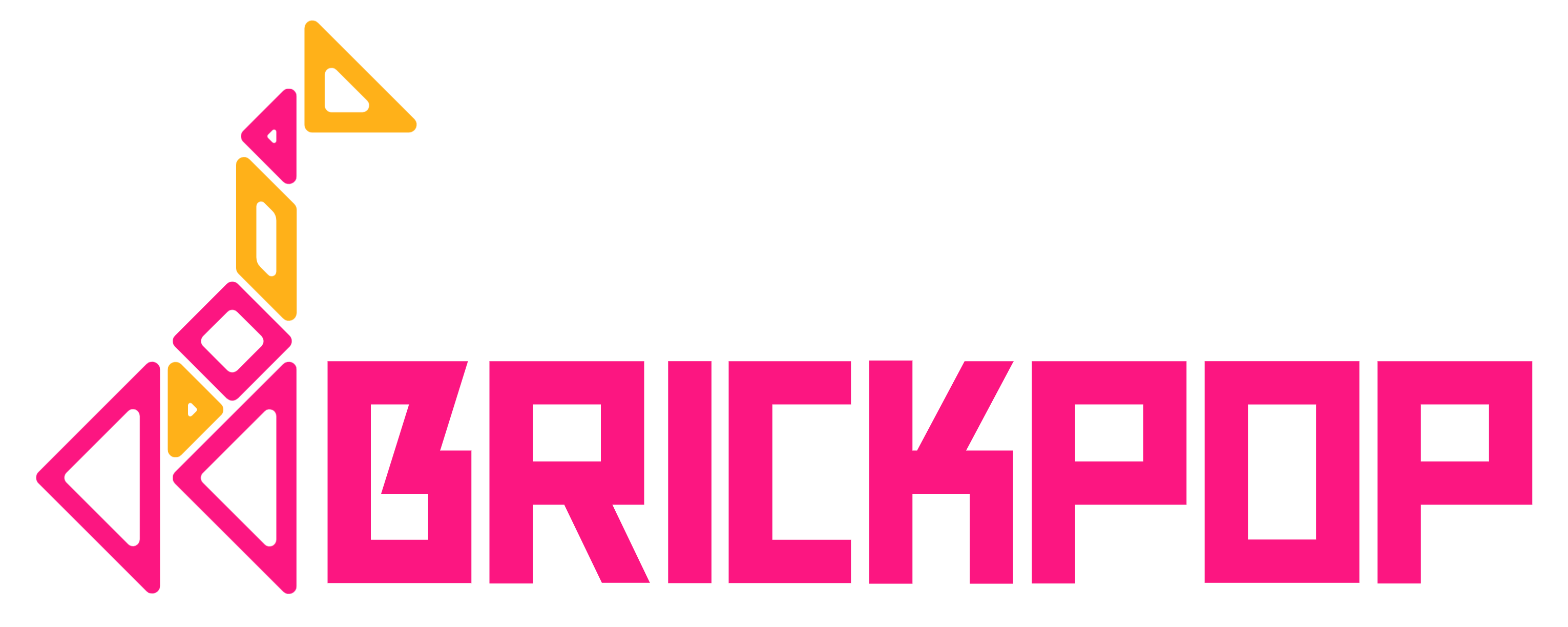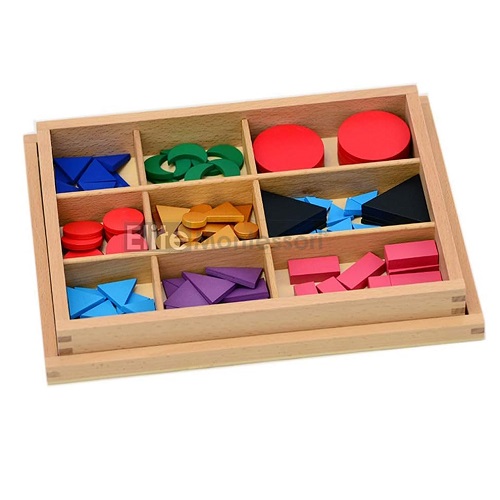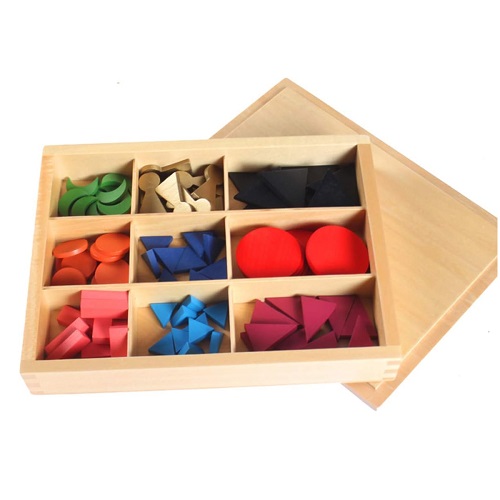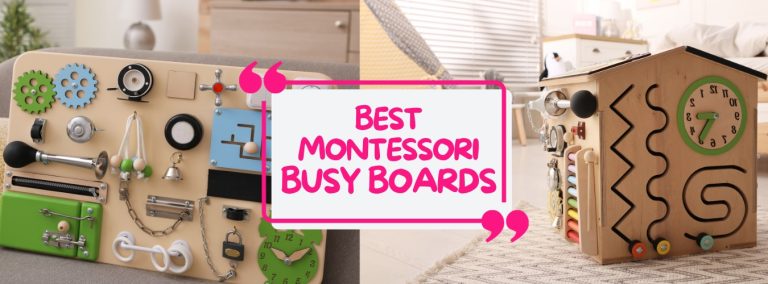Montessori Grammar Symbols: Complete Guide

Montessori grammar symbols are one of the key concepts you should understand. I wish I was introduced to grammar in this way so I could have developed my speech and my writing sooner. Plus, it’s helpful for children to start learning key development skills early.
The Montessori approach teaches grammar earlier than a standard education. Grammar and parts of speech can be extremely challenging for children. Montessori grammar symbols are a unique teaching tool that makes language learning much easier in Montessori classrooms. Children can learn grammar much faster and it can be easier to understand with the Montessori method. Let’s start by showing what the symbols look like and represent below.
Montessori Grammar Symbols

6 Best Montessori Grammar Symbol Toys and Activity Boxes
We put together some of the top-rated Montessori grammar symbol toys and boxes of symbols. There are also some stencils below as well. There is a short description for each product so you can find what you’re looking for.
1. Elite Montessori Basic Wooden Grammar Symbols with Box
The Elite Montessori Basic Wooden Grammar Symbols set includes 10 different symbols, each standing for a specific part of speech. Recommended for ages 3 and up, the set consists of 10 sets of wooden grammar symbols that help reinforce understanding of different parts of speech.
2. Adena Montessori Basic Wooden Grammar Symbols
The Adena Montessori Basic Wooden Grammar Symbols set includes 9 colorful wooden symbols that represent different parts of speech, like nouns, verbs, and adjectives. The set comes with a wooden box to keep the symbols organized and safe, making them great for classrooms or at-home learning.
3. DANNI Montessori Grammar Symbol Teaching Toy
The DANNI Montessori Baby Language Teaching Aids are educational toys that help children learn about grammar through nine wooden symbols representing parts of speech like nouns and verbs. The symbols are placed on a wooden base, but it’s important not to soak them in water due to their wood material; they can be wiped with a soft cloth instead.
4. Amazing Child Montessori Grammar Symbols Stencil
The Amazing Child Montessori Grammar Symbols Stencil is a small plastic stencil with 15 grammar symbols, designed for kids to trace and learn about grammar. It’s part of the Amazing Child Montessori brand and measures about 5 1/8″ x 2 3/8″ with dimensions of 8″L x 5″W and a weight of 0.32 ounces.
5. Montessori Grammar Function of Words Card Activities
The Maitri Learning Montessori Grammar/Function of Words Card Activities set is designed for ages 3-6 and includes card materials for various language activities. Children can read, symbolize, and act out the cards to learn about different parts of speech such as nouns, adjectives, verbs, and more.
6. Thoth Montessori Wooden Basic Grammar Symbols Learning Toys
The Thoth Montessori Wooden Basic Grammar Symbols are educational toys for toddlers and young children, designed to help them understand grammar concepts through play. The set includes 9 symbols representing different parts of speech, each with 10 pieces, and can be used for teaching at school, homeschooling, or early childhood development.
How Grammar is Taught in Montessori Schools
In traditional schools, grammar is often not formally introduced until 3rd or 4th grade, and it is typically taught through textbooks, worksheets, and memorization. The Montessori approach is radically different. Children are first exposed to grammar concepts as early as age 4 or 5 through hands-on learning, games, and stories. This allows abstract grammatical principles to be introduced concretely at a young age.
Several key principles shape the Montessori approach to teaching grammar:
- Grammar is experienced actively through stories, commands, and interactive lessons.
- Each part of speech has a corresponding symbol and color to represent its meaning.
- Specially designed materials like the Grammar Boxes enable independent exploration.
- Learning progresses from sensory introduction to naming to application.
- Grammar study helps children analyze and construct language.
This multi-sensory, developmentally appropriate approach brings grammar to life for young learners.
Montessori Grammar Symbols and Meanings
Montessori grammar symbols are shapes and colors used to represent the different parts of speech. Each symbol is thoughtfully designed to reflect the essence and function of its part of speech. These visual symbols allow abstract concepts to be introduced concretely.
Here are the Montessori grammar symbols and their significance:
- Noun – Black triangle – Represents early human structures and discoveries
- Article – Small light blue triangle – Links to and qualifies nouns
- Adjective – Medium blue triangle – Modifies and describes nouns
- Verb – Red circle – Depicts the energy of the sun, which animates nouns
- Adverb – Orange circle – Modifies verbs with details like when/how
- Preposition – Green crescent – Shows directionality and relationships
- Pronoun – Purple triangle – Replaces nouns
- Conjunction – Pink rectangle – Joins words and phrases together
- Interjection – Yellow keyhole – Words that are used to express emotion.

By associating each part of speech with a particular shape, color, and meaning, the grammar symbols offer a concrete way to grasp complex language. Students begin to see common visual patterns as language rules are categorized and classified.
Introducing Grammar Symbols in Montessori Classrooms
Montessori grammar symbols are first introduced to children around ages 4-6 during their primary education. The symbols are presented through engaging stories and hands-on activities.
For example, the adjective may be introduced through a game where the teacher asks students to bring her a book. When they return with different books, she says “No, not that one!” until they learn to ask for a more specific book using adjectives.
Once a concept is introduced, children will practice using the grammar symbols through activities like:
- Matching symbol cards to words
- Building phrases and sentences with symbols
- Identifying parts of speech in reading passages
- Categorizing words by symbol
- Creating their own examples
Using Montessori grammar symbols helps ingrain an understanding of each part of speech and how words function in sentences.
Montessori Grammar Boxes
After becoming familiar with the grammar symbols, children move on to using them with the Montessori Grammar Boxes. These hands-on learning tools offer a sensorial experience of building sentences and exploring how different parts of speech fit together.
There are eight Montessori Grammar Boxes, each focusing on a different part of speech:
- Article Box
- Noun Box
- Adjective Box
- Verb Box
- Adverb Box
- Pronoun Box
- Preposition Box
- Conjunction Box
The Grammar Boxes contain cards with words and phrases as well as corresponding grammar symbol cards. The child selects a sentence card, reads it aloud, acts it out, and then re-creates the sentence by placing the symbol cards above the word cards. This helps develop an understanding of the function of each part of speech in the context of building language.
As children progress through the sequence of Grammar Boxes, they construct more complex sentences, integrate new concepts, and see how the parts of speech relate to each other. This hands-on learning forms a concrete foundation for more advanced grammar study.
Advanced Montessori Grammar Symbols
Once students have mastered the basic parts of speech, more advanced grammar symbol cards can be introduced:
- Proper nouns
- Abstract nouns
- Collective nouns
- Demonstrative adjectives
- Intransitive verbs
- Helping verbs
- Linking verbs
- Gerunds
- Infinitives
- Participles
Cards with these advanced symbols help students delve deeper into the nuances of grammar. Activities focus on categorizing words, analyzing differences, and applying the symbols to reading passages.
Montessori Grammar Extensions and Applications
Montessori teachers utilize a variety of extensions and applications to reinforce grammar learning:
- Grammar games: Sentence-building races, detective games, and card-matching activities make grammar fun.
- Word study: Classifying words by part of speech or function. Examining prefixes, suffixes, antonyms, synonyms, etc.
- Sentence analysis: Using symbols to diagram sentences and identify patterns.
- Writing: Applying grammar knowledge by composing stories, poems, and reports.
- Reading: Using symbols to analyze text passages. Discovering patterns.
- Research: Select passages to symbolize parts of speech. Making observations.
These engaging activities allow students to internalize grammar concepts introduced with the symbols and boxes. Grammar becomes an analytical tool rather than an abstract set of rules.
Benefits of Montessori Grammar Symbols
Montessori grammar symbols offer a multi-sensory, developmentally appropriate way to introduce complex linguistic concepts to young children. Some key benefits include:
- A concrete representation of abstract parts of speech
- Colorful, hands-on materials appeal to young learners
- Meaningful stories and symbols aid memory and recall
- Sequenced materials align with developmental readiness
- Symbols provide a visual framework for how words function
- Hands-on activities promote active learning vs. passive rule memorization
- Foundational grammar skills transfer to reading and writing
Rather than dry textbooks, worksheets and lectures, Montessori grammar symbols bring language to life through active exploration, classification, storytelling, and design. This engages children’s interests, develops a deeper understanding, and instills a love of learning.
Conclusion
Montessori grammar symbols are an integral part of the Montessori language curriculum. The hands-on learning materials transform the study of grammar from monotonous rules to an intriguing process of investigation and discovery. Children are empowered to actively construct and deconstruct language through purposeful activities with an engaging set of manipulatives.










